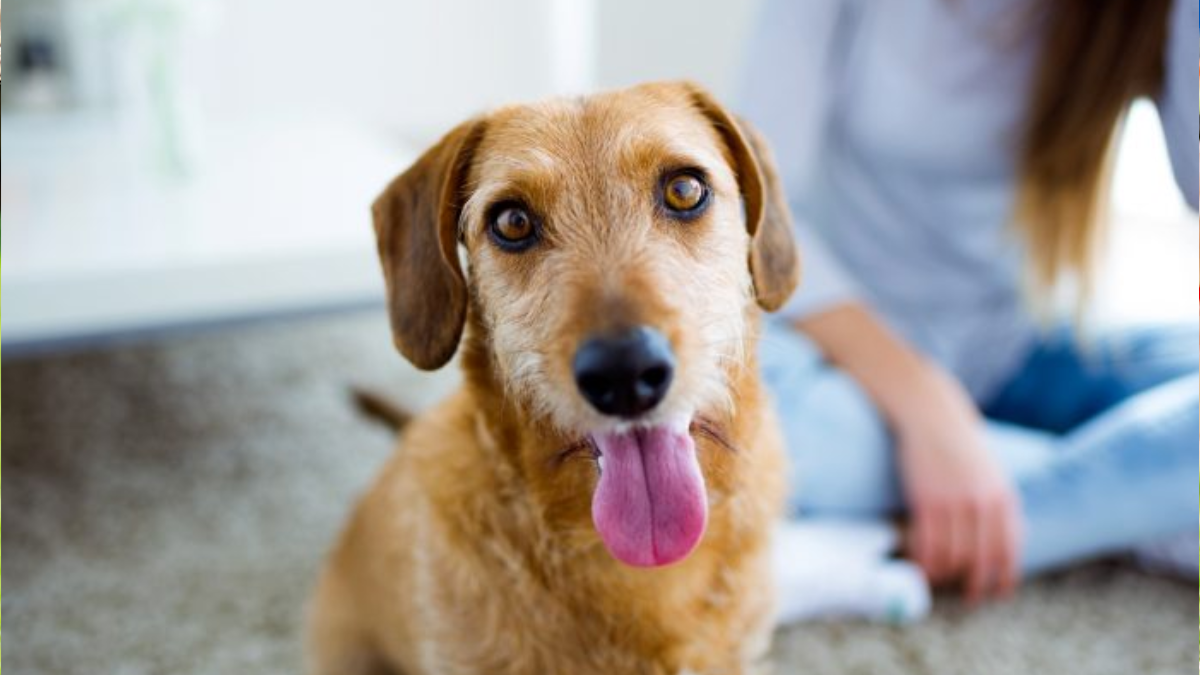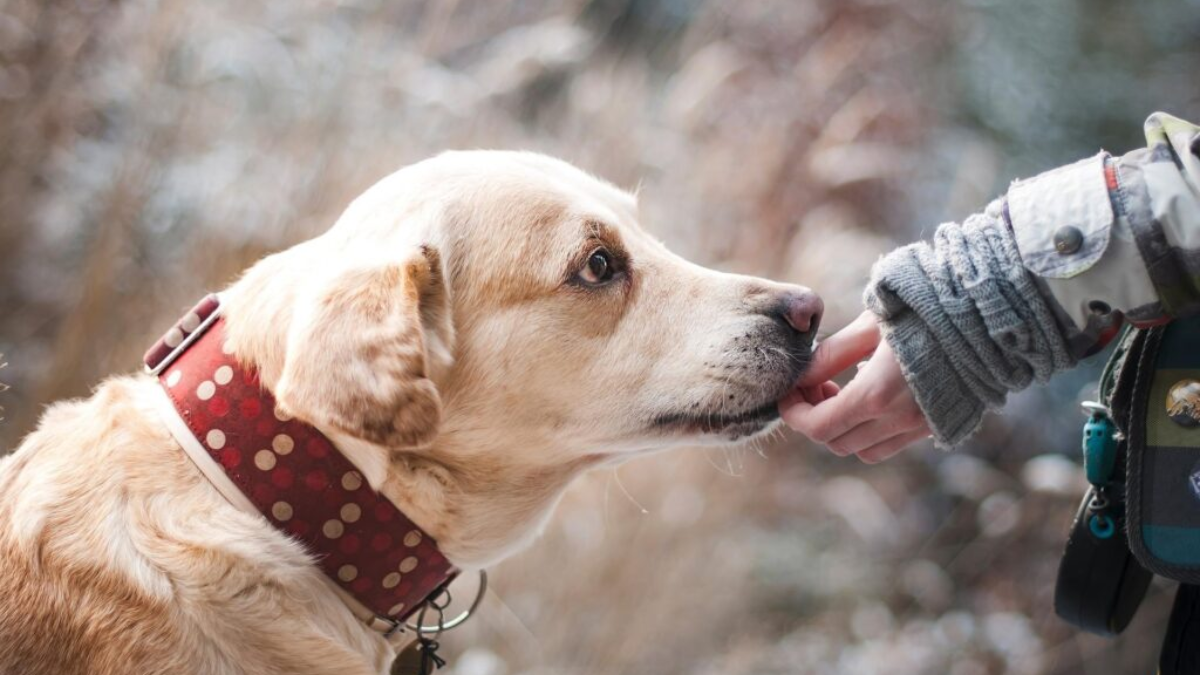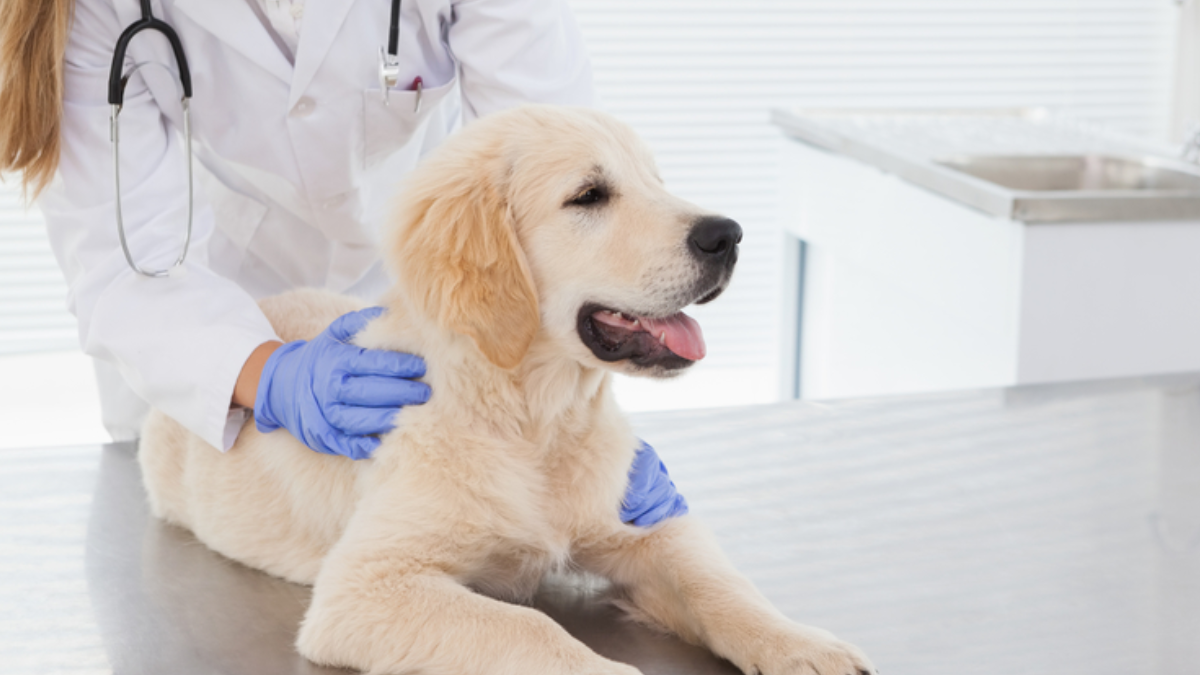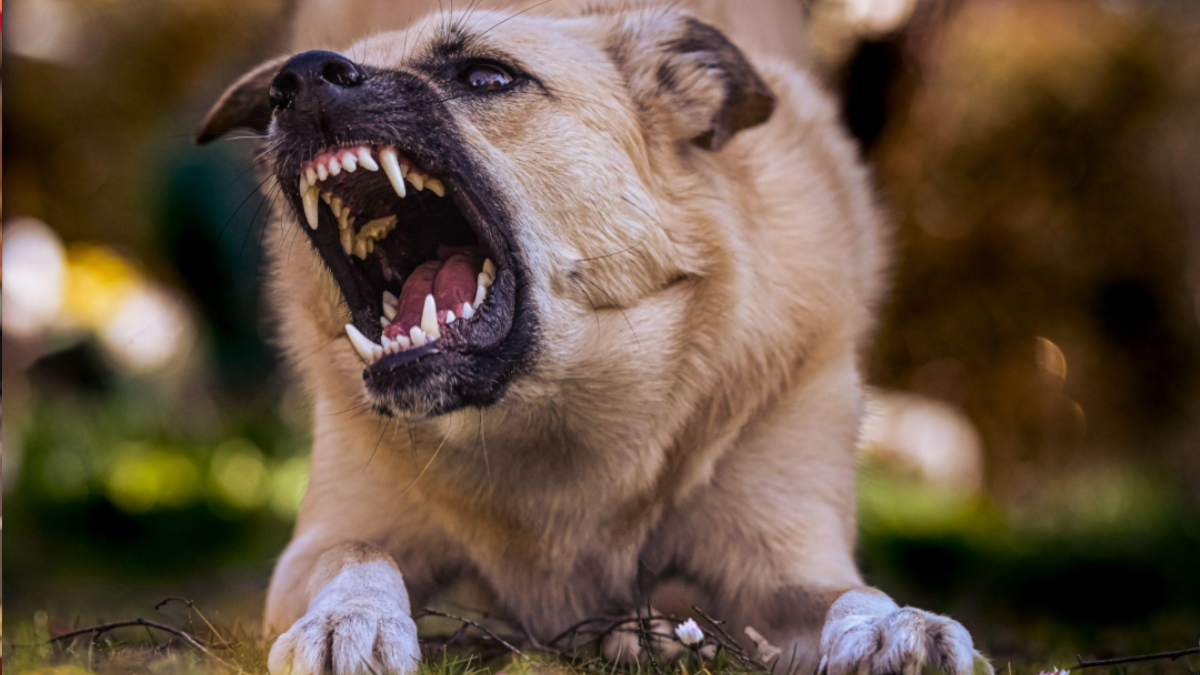Bringing a rescue dog into your home can be a rewarding experience, but it can also be a challenging one. Rescue dogs often come from difficult backgrounds and may have behavioral issues that need to be addressed. Integrating a rescue dog into your home requires patience, dedication, and a willingness to work through any challenges that may arise.

Before bringing a rescue dog into your home, it's important to do your research and find a reputable rescue organization. Many rescue organizations provide information about the dog's background, temperament, and any behavioral issues they may have. This information can help you determine if the dog is a good fit for your home and family. It's also important to consider the dog's age, energy level, and exercise needs to ensure that you can provide them with the care and attention they require.
Understanding Rescue Dogs
Rescue dogs are dogs that have been abandoned, surrendered, or taken from an abusive situation. These dogs may have had a difficult past, which can affect their behavior in their new home. It is important to understand the common traits, behavioral challenges, and the importance of patience when integrating a rescue dog into your home.
Common Traits
Rescue dogs often have a few common traits due to their past experiences. They may be anxious, fearful, or have trust issues. They may also have separation anxiety, which can cause them to become destructive when left alone. Some rescue dogs may have been abused, which can lead to aggression towards humans or other animals.
Behavioral Challenges
Rescue dogs may exhibit behavioral challenges when adjusting to their new home. They may be hesitant to trust their new owners and may take time to warm up to them. They may also have difficulty adjusting to new surroundings and may be fearful of new people or objects. It is important to be patient and understanding when working with a rescue dog, as they may require extra attention and training.
The Importance of Patience
Patience is key when integrating a rescue dog into your home. It may take weeks or even months for a rescue dog to adjust to their new surroundings and become comfortable with their new family. It is important to provide them with a safe and secure environment and to give them plenty of love and attention. Consistent training and positive reinforcement can also help a rescue dog overcome any behavioral challenges they may have.
In conclusion, understanding the common traits and behavioral challenges of rescue dogs, and the importance of patience, can help make the transition into your home a successful one. With time, love, and patience, rescue dogs can become loving and loyal companions.
Preparing Your Home
Integrating a rescue dog into your home can be a rewarding experience, but it requires some preparation. Before bringing your new furry friend home, it's important to create a safe and comfortable environment for them. This section will cover the three essential steps to prepare your home for your new dog: creating a safe space, gathering essential supplies, and setting boundaries.
Creating a Safe Space
Dogs, especially rescue dogs, need a space to call their own. It's important to create a designated area for your new dog to feel safe and secure. This can be a crate, a bed, or a designated room in your home. Make sure the space is comfortable and quiet, with plenty of soft bedding and toys. This will give your dog a sense of security and help them adjust to their new surroundings.

Essential Supplies
Gathering essential supplies before bringing your new dog home will make the transition smoother. Some essential supplies include:
- Food and water bowls
- High-quality dog food
- Collar and leash
- ID tags
- Crate or carrier
- Bedding
- Toys
- Treats
- Cleaning supplies
Make sure to choose high-quality supplies that are appropriate for your dog's size and breed. This will ensure that your dog is comfortable and happy in their new home.
Setting Boundaries
Setting boundaries is crucial when integrating a new dog into your home. This includes establishing rules for feeding, walking, and playtime. It's important to establish these rules early on to prevent any confusion or misunderstandings. Make sure everyone in your household is on the same page and consistent with the rules.
In conclusion, preparing your home for a rescue dog requires creating a safe space, gathering essential supplies, and setting boundaries. By following these steps, you can ensure a smooth transition for your new furry friend.
The First Day
The Arrival
The first day of bringing a rescue dog home is an exciting and nerve-wracking experience for both the dog and the new owner. It is important to ensure that the dog feels safe and comfortable in their new environment. Upon arrival, it is recommended to keep the dog on a leash and allow them to explore their new surroundings while supervised.

Initial Adjustment
During the initial adjustment period, the dog may feel overwhelmed and scared. It is important to give them space and time to adjust to their new surroundings. It is recommended to provide them with a designated area such as a crate or a bed where they can retreat to feel safe and secure.
Establishing Routine
Establishing a routine is crucial in helping the rescue dog feel comfortable and secure in their new home. It is recommended to establish a feeding schedule, a walking routine, and a designated playtime. Consistency is key in helping the dog adjust to their new environment.
By following these simple steps, the first day of bringing a rescue dog home can be a positive and successful experience for both the dog and the new owner.
Health and Wellness
Veterinary Care
When bringing a rescue dog into your home, it is important to schedule an appointment with a veterinarian as soon as possible. This will allow you to establish a baseline for your dog's health and address any immediate concerns. Your veterinarian can also recommend a schedule for routine check-ups and vaccinations.
Additionally, it is important to keep up with preventative care such as flea and tick prevention, heartworm medication, and dental cleanings. Regular grooming can also help prevent skin and coat issues.
Nutrition Plan
Proper nutrition is essential for a rescue dog's overall health and well-being. It is important to choose a high-quality dog food that meets your dog's nutritional needs. Your veterinarian can recommend a specific brand and type of food based on your dog's age, breed, and any health concerns.
It is also important to monitor your dog's weight and adjust their food intake accordingly. Treats should be given in moderation and should not make up a significant portion of your dog's diet.
Exercise Regimen
Regular exercise is important for a rescue dog's physical and mental health. The amount and type of exercise your dog needs will depend on their age, breed, and energy level. A daily walk and playtime in the yard may be sufficient for some dogs, while others may require more rigorous exercise such as running or hiking.
It is important to gradually increase your dog's exercise routine to avoid injury or exhaustion. Always keep your dog on a leash or in a secure area to ensure their safety.
Training and Socialization
Basic Commands
Training a rescue dog is an important part of integrating them into your home. Basic commands like "sit," "stay," and "come" are essential for their safety and your peace of mind. Consistency is key when teaching these commands, and positive reinforcement is the best method. Use treats and praise to encourage good behavior.
It's important to remember that every dog learns at their own pace, and some may take longer than others to understand and obey commands. Be patient and persistent, and never use physical punishment or aggression as a training method.
Social Skills
Socialization is also crucial for rescue dogs. They may have had limited interaction with other dogs or humans before coming to your home, so it's important to expose them to new experiences in a controlled and positive way.
Start with short walks in quiet areas and gradually increase the length and complexity of outings. Introduce your dog to other friendly dogs and humans, and reward good behavior with treats and praise.
Remember that some rescue dogs may have a history of abuse or neglect, which can affect their socialization. It's important to work with a professional trainer or behaviorist if you have concerns about your dog's social skills.
Dealing with Anxiety
Many rescue dogs experience anxiety, which can manifest in behaviors like destructive chewing, excessive barking, and hiding. There are several strategies you can use to help your dog feel more comfortable and secure in their new home.
Create a safe and comfortable space for your dog, such as a crate or designated area with their favorite toys and bedding. Use calming pheromone sprays or diffusers, and consider using a calming supplement or medication under the guidance of a veterinarian.
Consistent routines and exercise can also help reduce anxiety. Stick to a regular feeding and exercise schedule, and provide plenty of opportunities for play and mental stimulation.
By using positive reinforcement, socialization, and patience, you can help your rescue dog integrate into your home and become a happy and well-behaved companion.
Bonding with Your Rescue Dog
Bringing a new rescue dog into your home can be an exciting and rewarding experience, but it can also be challenging. Building a strong bond with your new furry friend is crucial to ensure a happy and healthy relationship. Here are some tips to help you bond with your rescue dog.

Building Trust
Building trust is the foundation of any relationship, and it's no different when it comes to your rescue dog. Many rescue dogs have experienced trauma or neglect in their past, making it essential to establish trust and create a sense of safety.
To build trust, it's important to be patient and consistent. Allow your dog to approach you on their terms, and avoid forcing them into situations that may make them uncomfortable. Use positive reinforcement techniques, such as treats and praise, to encourage good behavior and create a positive association with you.
Quality Time
Spending quality time with your rescue dog is key to building a strong bond. This can include going for walks, playing games, or simply cuddling on the couch. Whatever you choose to do, make sure it's something that both you and your dog enjoy.
Consistency is also important when it comes to spending time with your dog. Try to establish a routine that includes regular walks, playtime, and bonding activities. This will help your dog feel more secure and comfortable in their new home.
Positive Reinforcement
Positive reinforcement is a powerful tool when it comes to training and bonding with your rescue dog. Using treats, praise, and other rewards to reinforce good behavior can help your dog feel more confident and secure.
When using positive reinforcement, it's important to be consistent and clear. Use a clear and consistent command, such as "good boy" or "good girl," to signal to your dog that they have done something right. Reward them immediately after they perform the desired behavior to reinforce the behavior and create a positive association.
By following these tips, you can build a strong and loving bond with your rescue dog. Remember to be patient, consistent, and positive, and you'll be on your way to a happy and healthy relationship with your furry friend.
Long-Term Care
When adopting a rescue dog, it is important to provide long-term care to ensure their health, happiness, and integration into your home. This section will cover ongoing training, regular health check-ups, and mental stimulation to help you provide the best care for your new furry friend.
Ongoing Training
Training is an essential part of caring for a rescue dog. Ongoing training helps to reinforce good behavior and can help address any behavioral issues that arise. Consistency is key when training a rescue dog. It is important to establish clear boundaries and rules and to stick to them.
Positive reinforcement is an effective training method for rescue dogs. Rewarding good behavior with treats, praise, and playtime can help motivate your dog to continue behaving well. Consistent training sessions can help your rescue dog learn new commands and behaviors over time.
Regular Health Check-Ups
Regular health check-ups are important for all dogs, but they are especially important for rescue dogs. Many rescue dogs have had difficult pasts and may have health issues that need to be addressed. Regular check-ups can help catch any health issues early on and ensure your dog stays healthy.

During check-ups, your veterinarian will examine your dog's overall health, including their weight, teeth, and coat. They may also recommend vaccinations, heartworm prevention, and other preventative measures to keep your dog healthy.
Mental Stimulation
Mental stimulation is important for all dogs, but it is especially important for rescue dogs. Many rescue dogs have spent time in shelters or have had difficult pasts, which can lead to boredom and anxiety. Mental stimulation can help keep your dog's mind active and engaged.
There are many ways to provide mental stimulation for your rescue dog. Puzzle toys, interactive toys, and training sessions can all help keep your dog's mind active. Regular exercise is also important for your dog's mental health, as it can help reduce stress and anxiety.
By providing ongoing training, regular health check-ups, and mental stimulation, you can help ensure your rescue dog stays healthy, happy, and integrated into your home.
Troubleshooting Common Issues
Integrating a rescue dog into your home can be a challenging process. Even with the best intentions and preparation, several common issues may arise. Here are some tips on how to troubleshoot these issues.
Aggression
One of the most common issues that pet owners face when integrating a rescue dog is aggression. This can be a result of fear, anxiety, or territorial behavior. It is important to identify the root cause of the aggression and address it accordingly.

One way to address aggression is to seek the help of a professional dog trainer or behaviorist. They can help you understand the triggers for your dog's aggression and provide you with the tools to modify their behavior.
Another way to address aggression is to establish clear boundaries and rules for your dog. This can help them feel more secure and reduce their anxiety. It is important to be consistent in enforcing these rules and to avoid reinforcing aggressive behavior.
House Training
Another common issue when integrating a rescue dog is house training. This can be a frustrating and time-consuming process, but it is important to be patient and consistent.
One way to house-train your dog is to establish a routine. Take them outside at regular intervals throughout the day and reward them when they go potty outside. It is also important to supervise your dog when they are inside to prevent accidents.
Another way to house-train your dog is to use positive reinforcement. Reward your dog with treats or praise when they go potty outside. This will help them associate going potty outside with positive experiences.
Separation Anxiety
Separation anxiety is another common issue that pet owners face when integrating a rescue dog. This can be a result of the dog's previous experiences or their attachment to their new owner.
One way to address separation anxiety is to gradually increase the amount of time that your dog is left alone. Start with short periods and gradually increase the duration. This can help your dog become more comfortable with being alone.

Another way to address separation anxiety is to provide your dog with toys or treats that can keep them occupied while you are away. This can help distract them from their anxiety and make them feel more comfortable.
Overall, integrating a rescue dog into your home can be a challenging process, but with patience, consistency, and the right tools, you can help your dog adjust to their new environment and become a happy and well-adjusted member of your family.
Resources and Support
Integrating a rescue dog into your home can be a challenging process, but there are many resources and support systems available to help you and your new furry friend adjust to your new life together. Here are some of the most helpful resources to consider:
Rescue Organizations
Rescue organizations are a great place to start when looking for a rescue dog. These organizations often have a wide variety of dogs available for adoption, and they can provide valuable information about each dog's personality, temperament, and history. They may also offer training and behavior support to help you and your new dog adjust to your new life together.
Professional Trainers
Professional trainers can provide valuable support and guidance as you work to integrate your rescue dog into your home. They can help you identify any behavior issues and develop a training plan to address them, as well as provide ongoing support and guidance as you work with your dog. Look for trainers who specialize in working with rescue dogs, as they will have the experience and knowledge necessary to help you and your dog succeed.

Online Communities
Online communities can be a great source of support and advice as you work to integrate your rescue dog into your home. There are many online forums and social media groups dedicated to rescue dogs, where you can connect with other dog owners who have been through similar experiences. These communities can provide valuable advice, support, and encouragement as you work to build a happy and healthy life with your new furry friend.
Remember, integrating a rescue dog into your home is a process that takes time, patience, and dedication. But with the right resources and support, you can help your new dog adjust to their new life and build a happy and healthy relationship together.
Conclusion:
In conclusion, integrating a rescue dog into your home is a rewarding yet nuanced process that requires patience, understanding, and commitment. While rescue dogs bring immense love and companionship, they may also come with unique challenges stemming from their past experiences. To successfully integrate a rescue dog into your home, it's crucial to prioritize their well-being and establish a strong foundation of trust and communication.
Creating a structured routine, providing a safe and comfortable environment, and offering consistent training and socialization are essential steps in the integration process. Additionally, giving your rescue dog time to acclimate to their new surroundings and patiently addressing any behavioral issues that arise can foster a smooth transition.
Moreover, seeking guidance from professionals, such as veterinarians or certified dog trainers, can offer valuable insights and support throughout the integration journey. Remember, every rescue dog is unique, and the process may take time, but with love, patience, and dedication, your rescue dog can become a cherished member of your family. Integrating a rescue dog into your home is not just about giving them a second chance—it's about welcoming them with open arms and providing them with a loving forever home.




